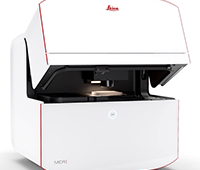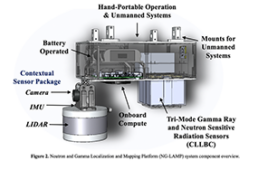 _ DISCLAIMER.jpg)
Photo by Analytics 4 Life
Heart disease is the leading cause of death globally, with coronary artery disease (CAD) attributed to one in seven deaths in the United States.
CAD is a condition where major blood vessels that supply the heart with blood, oxygen, and other nutrients become damaged or diseased, as defined by The Mayo Clinic. A buildup of plaques or similar obstructions will decrease blood flow to the heart, potentially leading to eventual chest pain or shortness of breath, and a heart attack down the road.
The disease can be treated, but has no cure.
Physicians diagnosing this condition typically rely on a number of tests to gain insight into what is happening inside a patient’s heart.
The first step doctors take may include routine blood tests, collecting previous medical history, and performing routine blood tests.
For some patients, more comprehensive examinations could follow this first step, including a nuclear stress test where doctors measure blood flow to the heart at rest and during stress. A tracer gets injected into the bloodstream and special cameras monitor areas in the heart that receive less blood flow.
An angiogram is another viable option. In this case, physicians inject a specialized dye into coronary arteries to illuminate blockages that appear on an X-ray.
These diagnostics have been used for years. However, they can result in harmful side-effects (i.e. being exposed to radiation and other foreign chemicals) and are also expensive and time-consuming.
Issues like this are why startup Analytics 4 Life (A4L) developed a CorVista, a specialized device that offers a cheaper, safer alternative to cardiac imaging.
An unexpected origin
The Toronto, Canada-based company was founded in 2012 by Sunny Gupta, who is a bio-electrical engineer by training.
Gupta has held various position with IBM and Microsoft, but the idea for A4L and CorVista came during his time working on a defense contract with the Canadian Military.
He was tasked with researching ways to analyze certain signals that could improve the ability of radar array systems to pinpoint launched missiles, while also establishing a mathematical model capable of intercepting them at 1,000 miles above the earth going at 2,000 miles an hour.
Gupta then felt that he could apply the same techniques to look at biological signals that could yield signs of disease.
This work spawned the invention of CorVista.
“From a digital health standpoint, what I believe is interesting that we are… [a unique]… combination of a medical device and big data analytics,” said A4L CEO Don Crawford in an interview with R&D Magazine.
CorVista is comprised of a four-part system. The first component is a proprietary recording device built with an array of seven sensors. It is attached to the patient where it scans the body for a three-minute period, searching for certain signals that get recorded.
“What makes our approach different than everybody else’s is that we’re using the organic energy as produced by the body so we only have the collectors. Other imaging techniques usually put some sort of energy into the body where almost every one of them have some sort of collector that just senses or detects the energy that bounces back,” continued Crawford.
Next, that three-minute recording becomes a complete signal package that gets instantaneously transmitted to a cloud computing receptacle.
A specialized machine-learning algorithm then gets to work sifting through these signals to produce a unique image and heart model, which highlights areas of disease associated with CAD. When a major artery gets blocked, it is because the heart muscle becomes ischemic because it’s not getting the blood and oxygen to work as it should.
CorVista relies on data obtained from angiograms to help determine which arteries are blocked and which are not so physicians can determine which regions of the heart are diseased and which are healthy.
The final image gets sent to a physician portal where Crawford emphasis that the system provides “predictive analysis” to help doctors make these decisions, considering factors like medical history, risk factors, and other symptoms to deliver a complete diagnosis.
Safety and convenience factors
Currently, there is a two-stage clinical trial occurring at 13 sites across the United States, designed to support further development of the device as well as prepare it for anticipated regulatory filings.
One of the ongoing examinations has over 2,000 patients enrolled so far where it will measure the performance of a machine-learned algorithm for CAD detection to the gold-standard cardiac catheterization results.
Each patient participating in this study will serve as his or her own control while also being at rest.
“In doing some of the early work in the clinical trial, we were already designated as a non-significant risk of the study because we are not injecting energy into the patient and they’re not getting radiation exposure,” said Crawford.
The end result of the trial will also help the company refine its algorithm with the overall goal of showing that this device can become a non-invasive, safe and affordable alternative for diagnosing this cardiac condition.
Being able to measure some of the metrics related to heart failure is viewed as one of the other indications CorVista could target as it progresses down the development pipeline.
“There’s a lot of energy that is produced by the heart, but there’s even more energy produced in the brain,” noted Crawford.
Analyzing brain conditions is another area the company could target, but Crawford elaborated that developers would require different kind of sensor sets to be installed in a headband to record these signals versus electrodes placed on the chest.
A4L expects to have completed enrollment in its clinical trial before the end of the year with the expectation it will submit an application the U.S. Food and Drug Administration in the first quarter of 2018.
The company recently completed a Series B financing where it raised $25 million.




